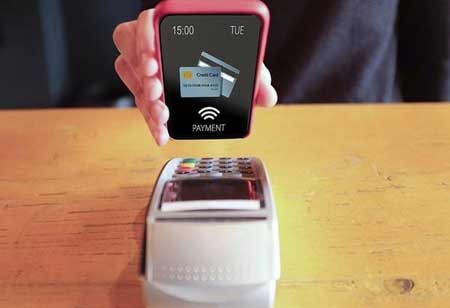THANK YOU FOR SUBSCRIBING
Contactless Economy in India: Making the Best of COVID-19
The sudden wave of digital and contactless payments has disrupted the reliance people had on physical money and the traditional banking systems.

By
Apac CIOOutlook | Tuesday, July 28, 2020
Stay ahead of the industry with exclusive feature stories on the top companies, expert insights and the latest news delivered straight to your inbox. Subscribe today.
The sudden wave of digital and contactless payments has disrupted the reliance people had on physical money and the traditional banking systems.
Fremont, CA: After demonetization carved the pathway for digital payments in India, mobile, internet infrastructure, and app-based economy proliferated to a level that influenced innovators to shift their attention to digital payments and, more specifically, contactless payments. The sudden wave of digital and contactless payments has deconstructed the reliance people had on physical money and the traditional banking systems. The journey from cash to cashless economy is progressing with quantum leaps—fuelled by the fear of contracting the Coronavirus disease—making way for the next significant transformation in fintech in India.
Migration from Contact to Contactless Payments
The widespread adoption of affordable mobile devices and internet connectivity has increased the fintech interplay and changed traditional banking methods. Compared to a few decades ago, today’s consumers have options to transact from – digital wallets, UPI, net banking, QR code scan, and contactless payments cards.
Contactless payment has been around from the past decade and has unraveled in a step by step adoption. One of which is the RBI’s November 2018 guideline to replace all magnetic stripe-only cards with EMV chip cards by December 31, 2018. This move pushed awareness among consumers and businesses about the intention of the banking regulator to secure digital payment modes. Another well-timed intervention by the RBI was by removing the second-factor authentication (the use of PIN) for transactions up to INR 2,000/-
These actions also provided the necessary boost for digital payment adoption by merchants and encouraged them to migrate to contactless payment modes due to the expectations of the consumers.
Payments Industry is on the Edge of Disruption
India is the second-largest market for smartphone penetration in the world. The well-ahead of time-move made by the regulator around tokenization last year presented the potential to transform the way 800 Million debit cardholders pay. That said, with online commerce and mobile PoS transactions in India predicted to grow up to $134.5 billion with 657.77 million users by 2023, the urgent focus should be on solving the pain points for merchants and creating awareness around financial tech as only 20 percent accept digital payments in the country
While the shift to contactless payments is still advancing, mobile payments will redefine the whole contact payments experience. Simultaneously, banking institutions and fintech companies are putting more effort into innovation and digital payment technologies. India’s contactless economy will attain fruition and will further our journey to becoming a less-cash economy.
See also: Top Payment and Card Solution Companies





